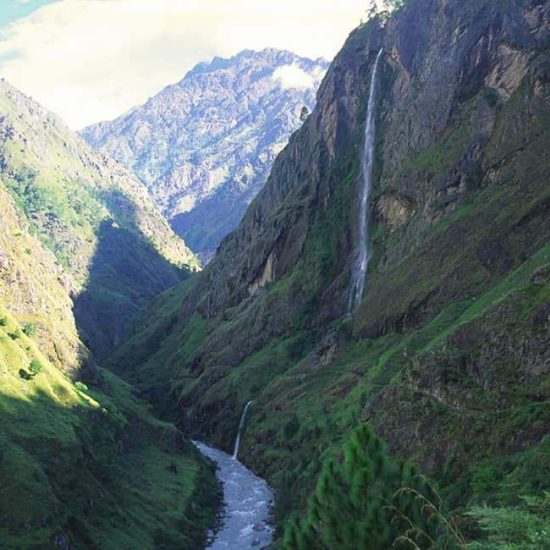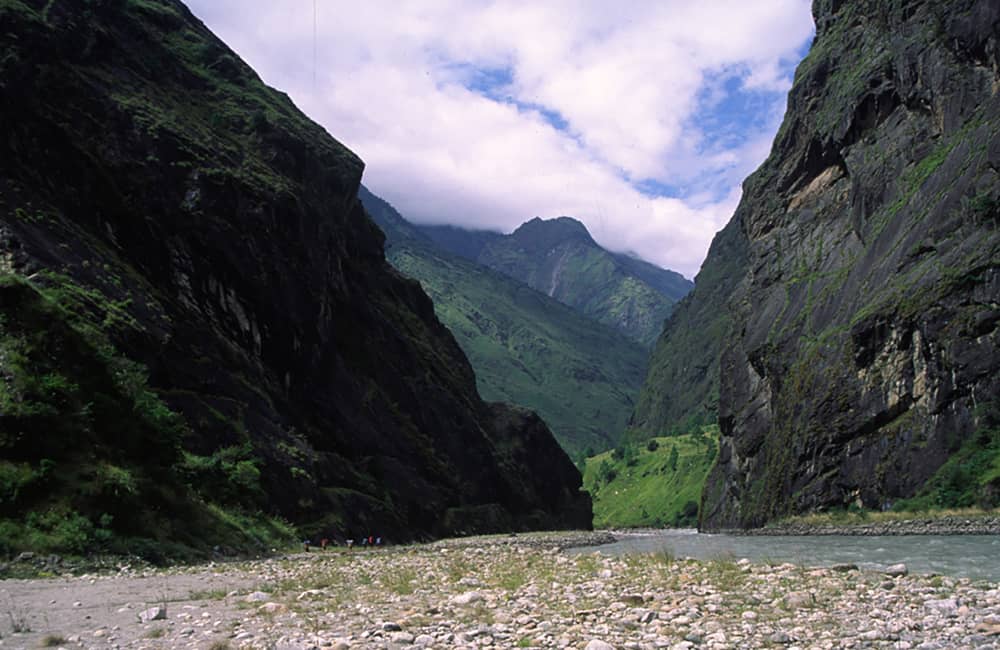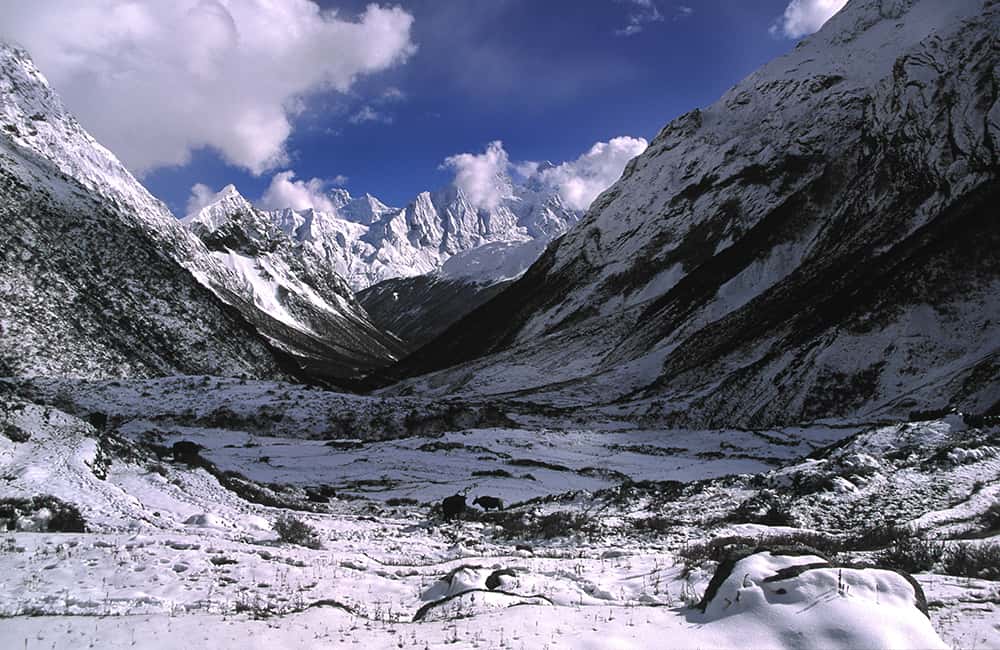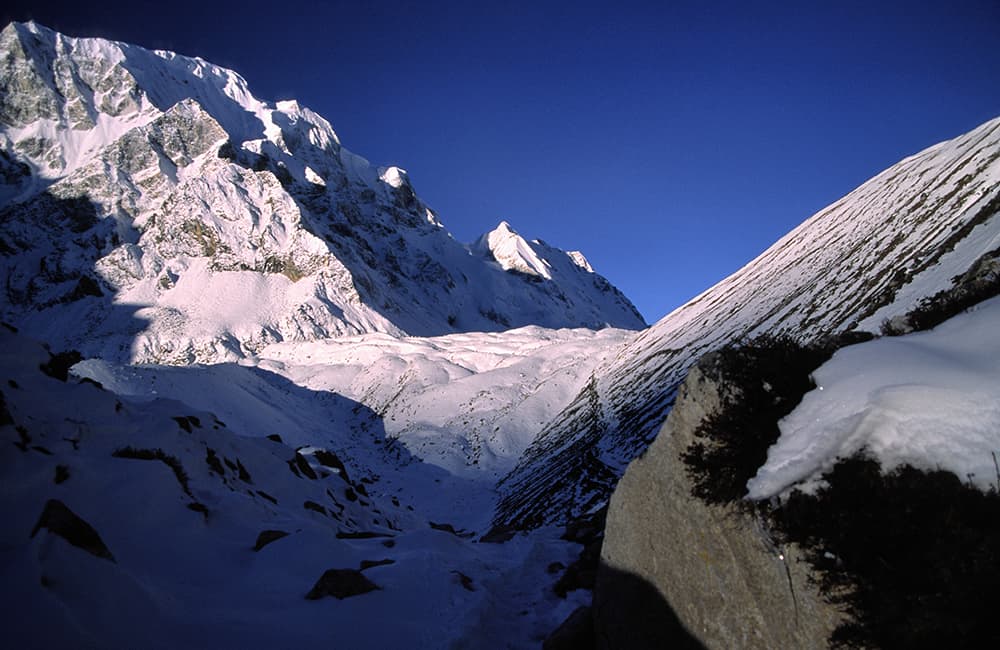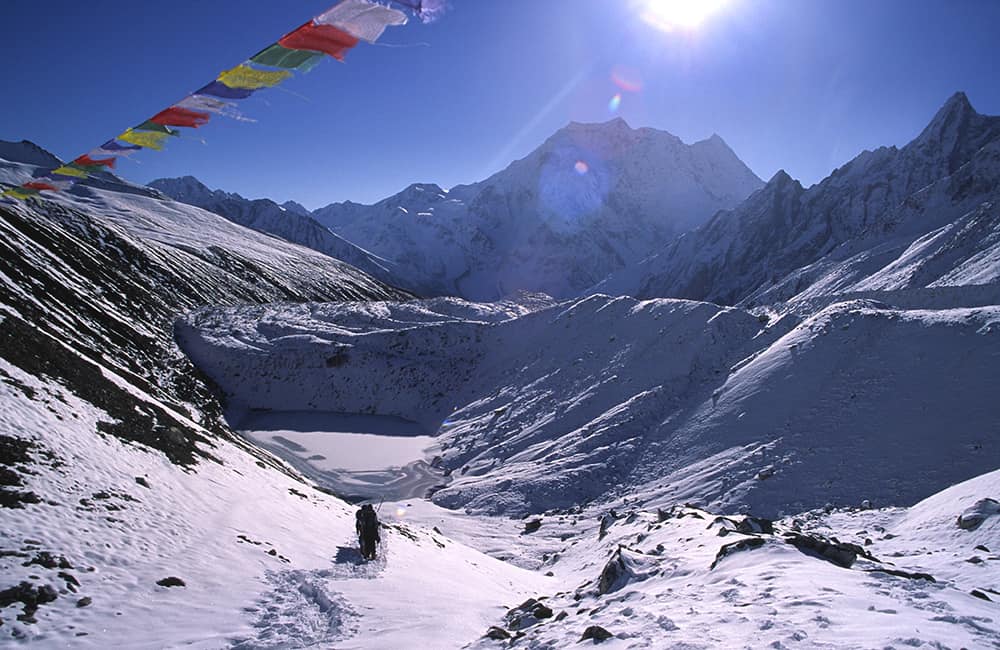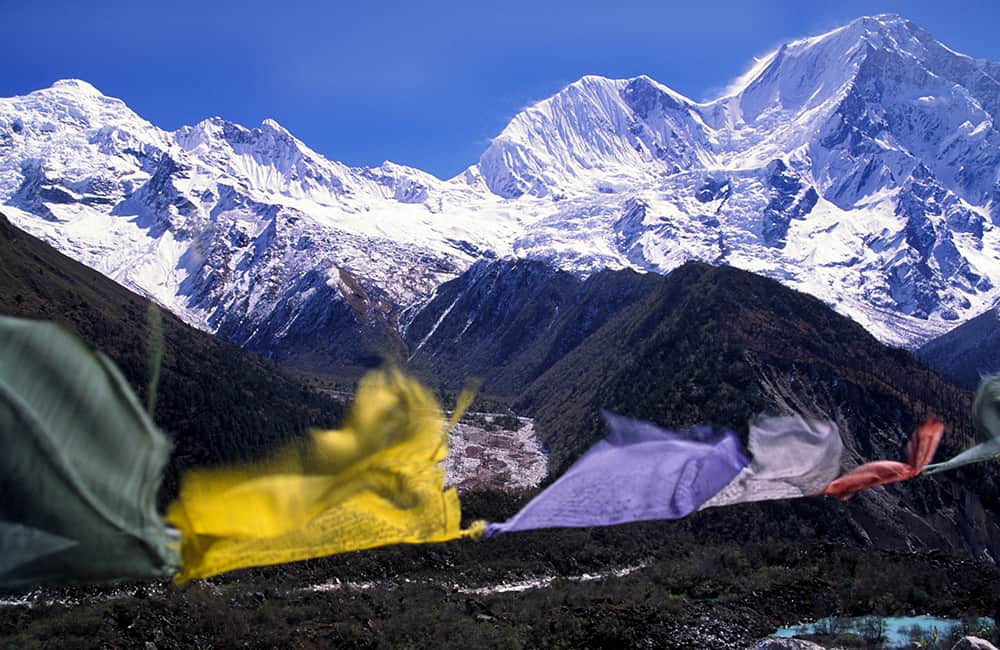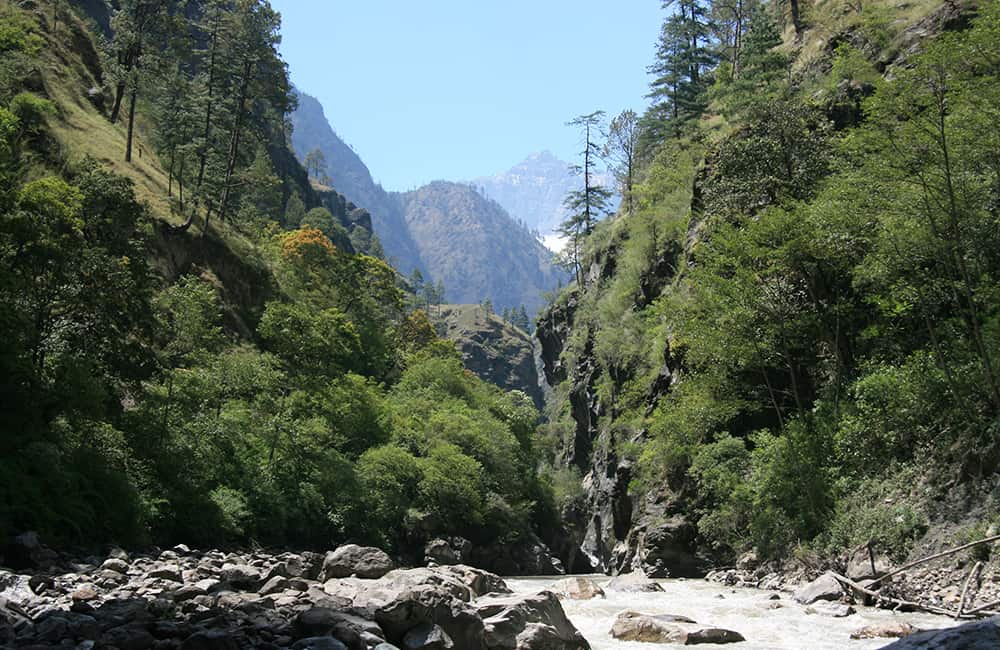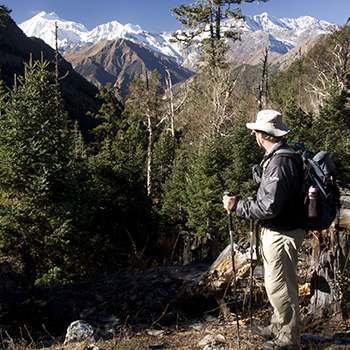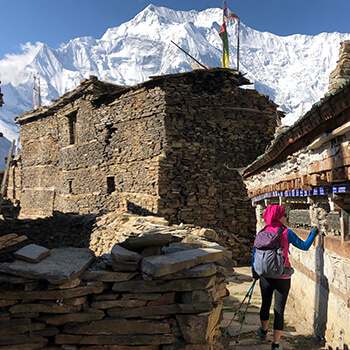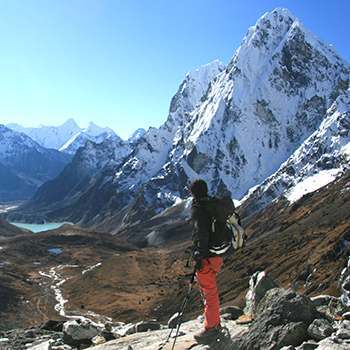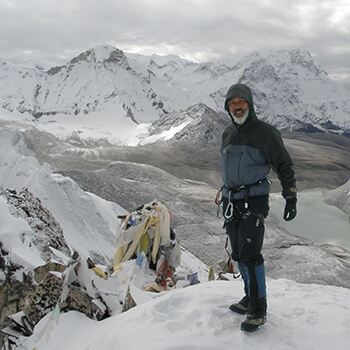Manaslu Circuit
Manaslu Circuit Trek
One of the classic Nepal Himalaya treks, the Manaslu Circuit has it all. Stunning mountain vistas, enchanting cultures, some of the most beautiful sections of trail in Nepal, and all around the eighth highest mountain in the world.
Key points:
- Trekking Grade: Grade 4
- Duration & distance: Between 11-16 days total
- Gradient: Very steep with some arduous climbs
- Quality of path: Formed track, some obstacles
- Quality of markings: Signs at beginning, end and major intersections
- Experience required: Some walking experience required
- Walking times: Less than 7 hours per day
- Steps: Occasional Steps
- Highest point: 5135m
- Best season: Mar-May and Oct-Dec
- Accommodation: Camping and teahouses
- Recommended map: NP106 GHT Series Manaslu and Ganesh Himals, Himalayan Map House, 2017
- Recommended Guide Book: Nepal Trekking and the Great Himalaya Trail, Trailblazer, 2020.
Note: A road is under construction around the entire Manaslu Circuit and is complete to Machhakhola. It is likely that you will encounter road works each day up to Sama (Ryo).

GRADE 4
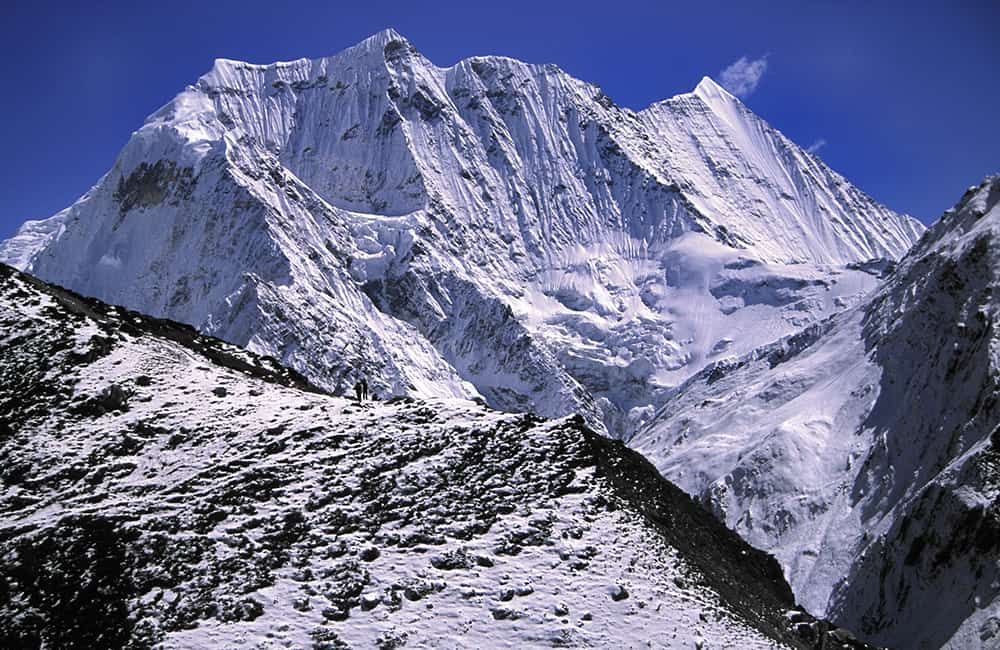
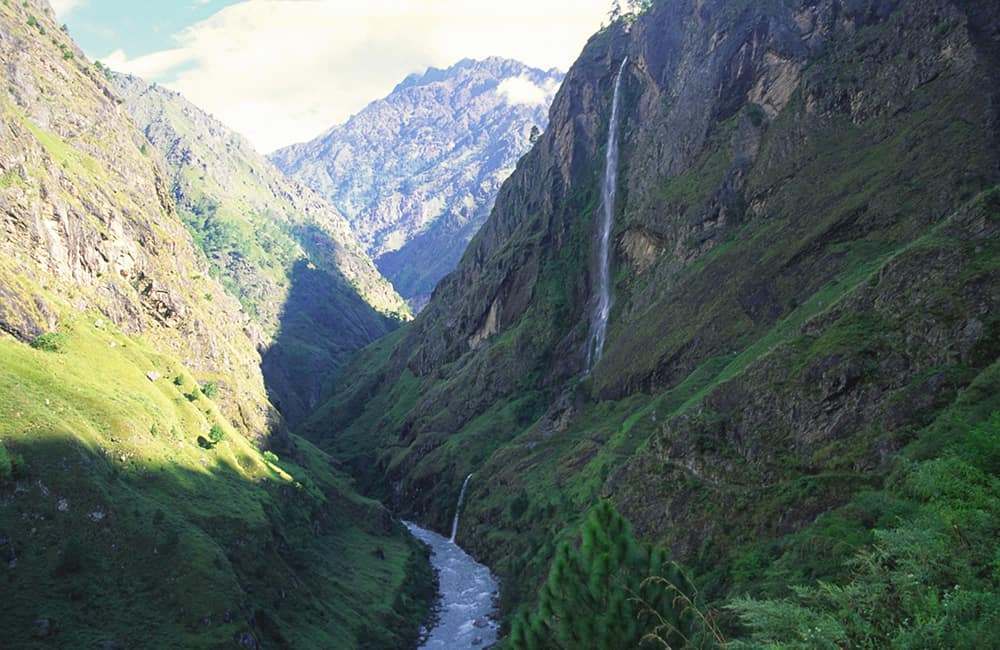
When to Trek the Manaslu Circuit?
Sandwiched between two very popular trekking regions (Langtang and Annapurna) the Mansalu Circuit is often described as the best general trek in Nepal. The trek is suffering from some extensive road building and some highly commercial attitudes among some locals. However, the Manaslu Circuit trail has retained much of its charm and uniqueness. For those prepared to take their time, there are plenty of options to explore with colourful cultures set against a backdrop of classic Himalayan peaks.
There are a number of ways to begin your Manaslu Circuit adventure:
- Option 1: Drive to Lapubesi, or beyond if possible, which gives the shortest overall itinerary of 11-12 days. There are teahouses the whole way (see from Day 4 of the route described).
- Option 2: Drive to Gorkha and hire a jeep to Barpak, then cross the Gupsi Danda to Laprak. Then join option 1 at Khorlabesi (on day 4 of the route described). This route has teahouses the whole way.
- Option 3: Drive to Gorkha and hire a jeep to Barpak, then cross the challenging Rupina La to join the main trail at Nyak. This route adds at least 4 days to Option 1, and requires camping equipment.
The Manaslu Himal has a long trekking season from early October through to mid-February. It then re-opens, after a brief winter in mid-March, and can be trekked until the monsoon begins in June. However, snow can block Larkye La at any time of year and it can be icy, requiring a rope. Delays occur in all seasons, so you should make sure you can adjust your itinerary if necessary.

Manaslu Circuit Accommodation and Permits
The Manaslu Conservation Area is a restricted trekking region and you are required to trek in groups of a minimum of two plus a registered guide. Although it is possible to avoid taking a guide, locals will probably be less friendly and certainly charge you higher prices.
There are now many teahouses and local lodges in every community around the Manaslu Circuit. In peak season, it is worth booking in advance.
GHT and Other Trails near the Manaslu Circuit
GHT through-hikers have few options in this region. The Ruby Valley trek is the most obvious and popular route for joining the Manaslu Circuit with the Langtang and Helambu region. For those wanting to avoid the Manaslu Circuit, the cross-country route from Gorkha to Besisahar takes 3-4 days and is an enjoyable short trek in its own right.
Gorkha to Arughat
Instead of ascending the Daraudi Khola from Kalika Temple above Gorkha, there is a cross-country route to Arughat via a dirt road to Khanchowk (6hrs) and then descend to Arughat (4½hrs). You can get a jeep or walk along the dirt road to Arkhet Bazaar (2hrs) and continue to Machhakhola (5hrs), which is 30 minutes before Khorlabesi and then begin the Manaslu Circuit from day 7.
Gorkha to Besisahar
Heading west from Gorkha means first crossing the Daraudi Khola and then climbing to either Luitel Bhanjyang or Appipal (one day of 6-8 hours either way). Both routes are similar and lead through mixed farming land broken by patches of shrub forest. The descent to the Marsyangdi Nadi valley will ultimately lead to the Besisahar road. There are a number of places to cross the Marsyangdi. Your choice will depend on how quickly you want to get to the accommodation offered in the bazaar towns of Paudi, Sundar (both a 6- to 8-hour day depending on the route) to then arrive at Besisahar (one 6- to 7-hour day following the road) and onward trek options.
Tsum Valley
Tsum Valley (Grade 3) was opened to tourists in 2002 and is becoming a popular side trip to the Manaslu Circuit. The Larke communities here have three gompas all run by nuns.
The Tsum valley is entered via a right (north-east) trail fork after Thangmurmu and before crossing the Chumjet/Nyak bridge over the Budhi Gandaki (1½hrs from Phillim). You first climb through pine forest to the few small fields of Lukuwa (aka Lokpa, 2040m, 1hr), where there are views up the Siyar and Budhi Gandaki valleys. Descend through bamboo jungle to a wooden bridge that crosses the Gumrung Chu (30 mins) – this is a good lunch spot.
The valley now swings north and the trail climbs a rough trail through jungle and then on to grassy hillside with stone slabs. Once across the slabs, the trail descends again to a suspension bridge that crosses to the north bank of the Siyar Khola (1½hrs).
The main trail crosses the bridge (rather than going to Ripchet – see Landan Kharka) over the Siyar Khola. You then climb through terraces and scattered stone houses to Tumje (3230m, 1¼hrs), where you can camp in the school grounds. Do not leave anything unattended in this campsite, not even your toilet tent! Locals have a reputation for theft during the night and in all weathers.
A pretty grass-covered trail descends to the Siyar Khola and passes a small gompa run by three nuns who will be glad to offer a cup of Tibetan tea for a donation. Not far beyond the gompa is a bridge over the Sarpu Khola to Kowa (2630m, 1hr). Here the trail forks, the right-hand track leads to Domje (2460m, 20 mins), see Landan Kharka, p000. Take the left-hand trail that leads through the village and past a row of chorten before climbing at a constant gradient through scrub rhododendron for 450m.
A chorten and mani wall at 2970m mark the edge of a broad flat valley and the outskirts of Chokung (3031m, 3hrs) where there is another small gompa and campsite. Continue up the valley on an easy trail to Rachen Gompa, which houses 63 nuns and was established in 1927. Beyond is Mu Gompa, where the valley branches in two; each branch has a trail that leads to Tibet.
Exit Routes from Tsum
It is possible to return to Tumje in 5 hours from Chokung, where you then have to choose your exit route: either retrace your steps to Lukuwa and then join the Manaslu Circuit trail at the bridge to Chumjet, or take the high and difficult route via Thak Khola to Lana.
This route is for experienced trekking groups only; no one with vertigo should attempt the route – it is exposed and very dangerous – and porters should not be taken. Do not stop at Tumje, instead continue for 2 hours to Chumje (3020m), which is a small collection of homes before the Urgin Chu. The following day follow a trail that crosses the Urgin Chu and then climbs out and up to a grassy ridge with three chortens (3150m, 2hrs).
The trail now drops steeply before crossing a tricky section of steep ground covered in scrub. Climb another ridge and descend again through bamboo forest. The trail can be hard to find and you must be careful on the slippery log ladders. Beyond the forest, the route again climbs a ridge on a trail that follows a stream. Once on top of the ridge you enter a small village, Durjung Kharka (2570m, 5hrs), where you can camp in the terraces beyond the village. From here, it is only 3 hours down to the main trail at Lana.
Landan Kharka (north face of Ganesh I)
From the trail junction before crossing the Siyar Khola bridge, take the right-hand track to Ripchet (2420m, 1hr) and then on to Domje (2460m, 2hrs). You should check in Domje if the trail to Landan Kharka is accessible. If there have been landslides it might be wise to employ a guide here. From Domje, climb a steepening forest trail on the north bank of the Landan Khola. After 3 hours you will reach a kharka with good views of Ganesh I (aka Yangra, 7422m).
The trail continues through forest for another 2 hours before leaving the treeline and reaching an ablation valley on the north side of a nameless glacier. In another hour you reach the final kharka and campsite beneath a natural amphitheatre below the Ganesh Himal.
How Much does the Manaslu Circuit Trek Cost?
To help you budget and plan, we’ve made a comprehensive costing explanation on How Much Does the GHT Cost? But here’s a simplified breakdown.
GHT Manaslu Circuit Trek for 14-days estimated costs:
- Solo as much as possible US$2,050.
- Twin-share with minimum guiding US$1,610 per person.
- Twin-share fully supported US$3,050 per person.
Do you have any questions about costs? Please Get in Touch for more details.
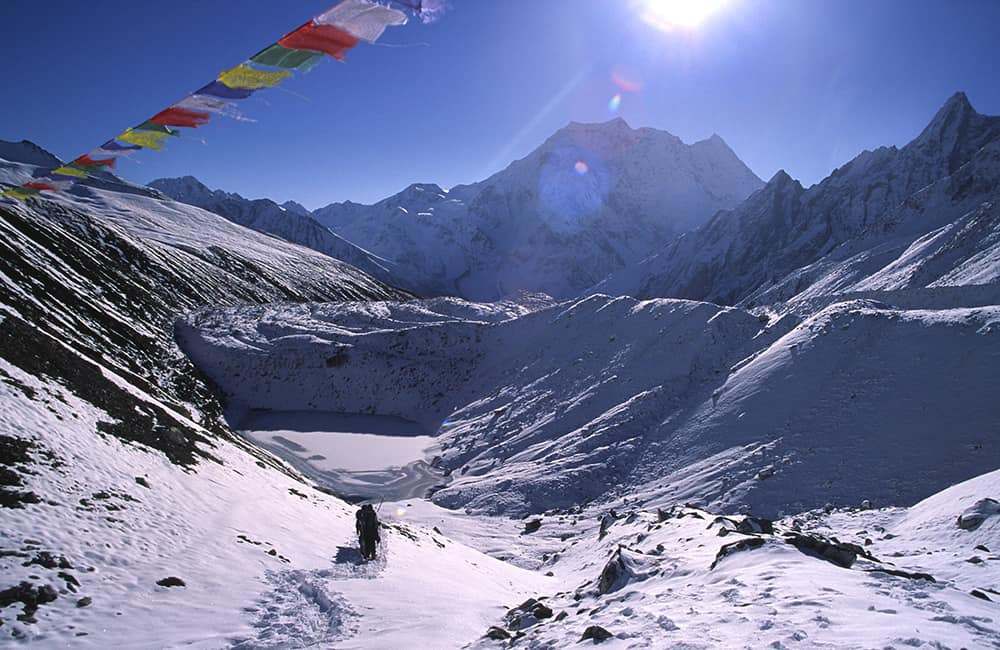
Customisation is Normal
Want to do things a little differently? Maybe take some extra time, or go a bit faster? Or avoid technical sections or combine with other trails? Every GHT trek is different and that changes the price, but please feel free to Get in Touch to ask questions and how to customise your own trek.
Bookings
Please note that www.greathimalayatrail.com does not handle bookings for treks. We are here to inform you about the trails and logistics, but you will need to book through a registered trekking operator in Nepal. If you would like an operator recommendation or feedback on a company you are already talking to, then please Get in Touch.
Your Impacts on the Manaslu Circuit Trek

Solo (Independent)
The Manaslu Circuit offers some of the highest social impacts and relatively low GHG and waste impacts.
If you can take a little more time for side trips, your trek can be really good news for locals.


Twin Share (Independent)
The Manaslu Circuit offers some of the highest social impacts and relatively low GHG and waste impacts.
If you can take a little more time for side trips, your trek can be really good news for locals.


Camping (supported)
The Manaslu Circuit offers some of the highest social impacts and relatively low GHG and waste impacts.
Considering the number of teahouses vs camping GHG and waste increase, camping doesn’t make much sense.
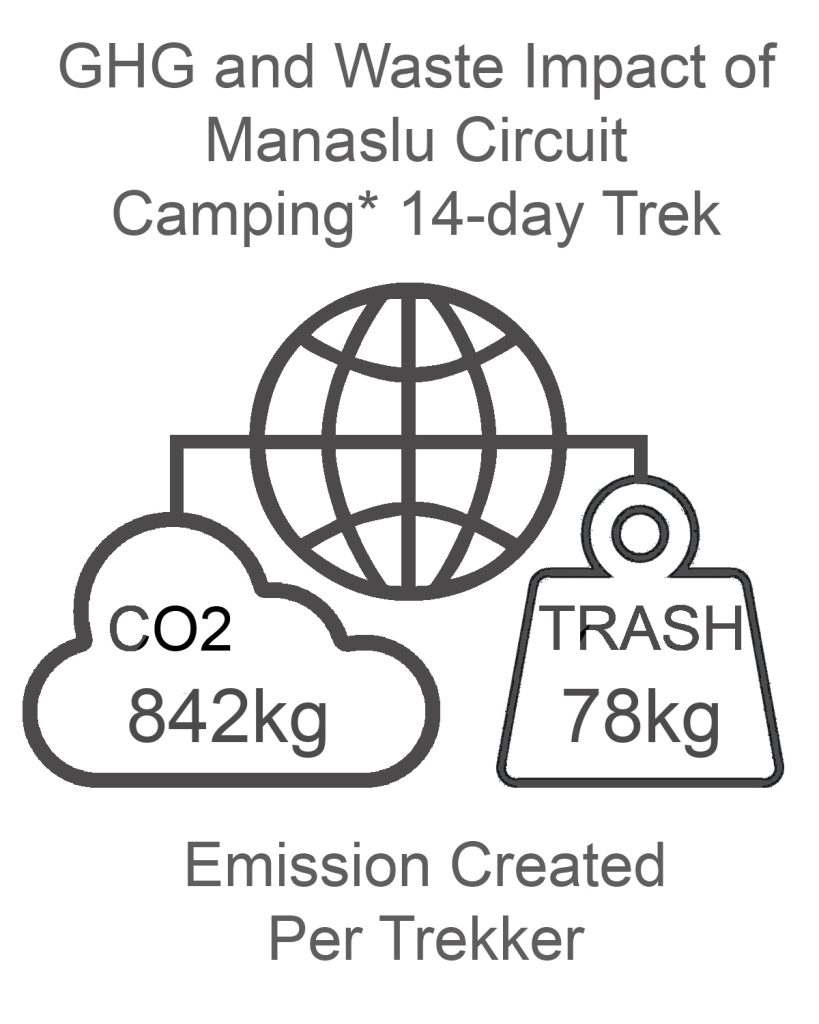
For more information about social, Green House Gas and waste impacts of treks, see The Impact of your Trek.
-
Destination
-
DepartureKathmandu
-
Dress CodeMid-altitude alpine clothing and camping equipment required
-
IncludedManaslu Circuit
-
GradeGrade 4
-
Idea Date Range15/10/2021
-
Style of TrekTeahouse






